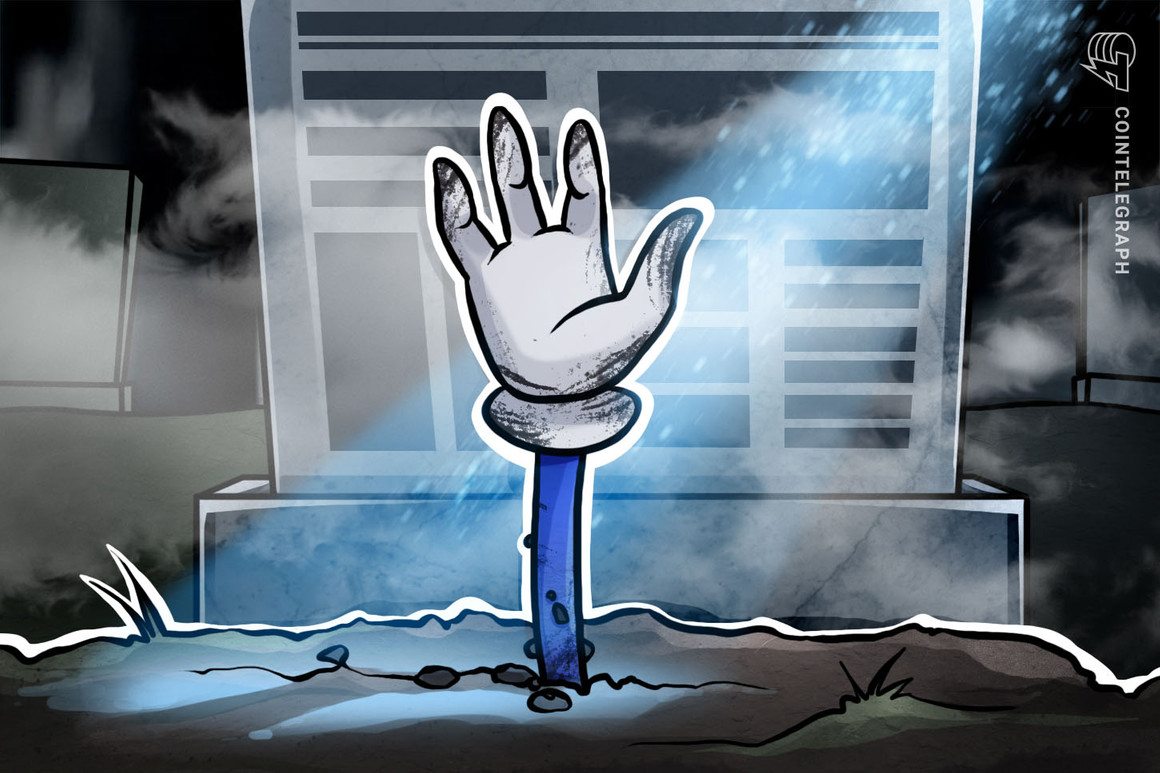Terra remained the focus of the majority of headlines throughout May for its spiral collapse leading to a loss of over $40 billion in investors’ money
Terra remained the focus of the majority of headlines throughout May for its spiral collapse leading to a loss of over $40 billion in investors’ money. Despite some early resistance from the community and heavy backlash from the likes of Binance CEO Changpeng “CZ” Zhao, Terra co-founder Do Kwon managed to relaunch the collapsed network with a new chain called Terra 2.0 (Phoenix-1).
The amended proposal for the relaunch of the network by increasing the genesis liquidity, which introduces a new liquidity profile for pre-attack Luna Classic (LUNC) holders and decreases the distribution to post-attack TerraUSD Classic (USTC) holders, was approved by the community with a 65% vote in favor.

The new blockchain went live on May 28 after a hard fork. The new token stays Terra (LUNA) and the old one was rebranded to Luna Classic. With the new network launch, the holders of LUNC, USTC and Anchor Protocol UST (aUST) were eligible to receive the new tokens.
Despite industry-wide outrage against Do Kwon — the co-founder and the parent company Terraform Labs are facing lawsuits and investigations in South Korea — major crypto exchanges including Binance, Kucoin, FTX, Bitfinex and several others announced support for the Terra 2.0 chain.
Cointelegraph reached out to Binance to inquire about the reasoning behind its listing of the LUNC on its platform, especially when the market is still recovering from the after-effects of the $40 billion collapse. A Binance spokesperson told Cointelegraph:
“Binance listed LUNA on the Innovation Zone, which is a dedicated trading zone where users can trade new tokens that may have increased volatility and pose a higher risk than other tokens. Before being able to trade on the Innovation Zone, every user has to visit the web version of the Innovation Zone trading page and complete a questionnaire after reading the Binance Terms of Use.”
Binance claimed that the purpose of the Terra 2.0 was to compensate those who had lost a significant amount of funds during the crash of the main network. As a platform, “Binance decided to let people trade the airdropped tokens to realize their assets.”
CZ has also said that he is not very optimistic about the future of the Terra 2.0 ecosystem and that the decision to list the new token was based on helping investors recover some of their losses. Speaking to Cointelegraph, Zhao said:
“We still need to ensure continuity of people’s access to liquidity. We have to support the revival plan hoping that it may work.”
Kraken CEO Jesse Powell also defended listing LUNA, saying it’s the community’s demand. However, he did mention that a listing doesn’t necessarily equal an endorsement for the controversial token.
Related: Kraken CEO defends listing LUNA 2.0: ‘Bitcoin traders don’t pay the bills’
Customer satisfaction seems to be a common concern for the continued listing fo the asset. Bitrue crypto exchange research analyst Whitney Setiawan told Cointelegraph:
“As an exchange, Bitrue’s main priority is customer satisfaction, as it’s only right that we give our Bitruers the freedom to invest in assets of their choice. We are still closely monitoring developments from the Luna Foundation Guard investigation and would take immediate action should the situation get worse.”
Terra 2.0 sees heavy volatility
The launch of the new network was nothing less than a frenzy. To begin with, many investors claimed that they were not appropriately compensated for the new airdrop. The Terra 2.0 team acknowledged the issue and said they are working to resolve the issue soon.
Many users also joked about how the new airdrop is a mockery, given that people have lost hundreds of thousands of dollars and received about $50 worth of new tokens in return:
Lost $300k in $LUNA
Got an airdrop of $59
Thank you do kwon and team
— Ash WSB (@ashwsbreal) May 29, 2022
The new airdropped token started trading across multiple crypto exchanges on May 28. However, as warned by many, the new token showed very high price volatility on the very first day of the relaunch, dropping by over 70%. Many investors who received the new LUNA started selling as soon as they received it, showing a lack of confidence in the new ecosystem.
LUNA was listed for $18.85 on the relaunch day but subsequently plummeted to $5.71 before recovering half of its losses a day before the Binance listing. The token is currently trading at $6.44, according to Cointelegraph data, nearly one-third of its listing price.

Justin Hartzman, CEO of crypto trading platform Coinsmart, told Cointelegraph, “Precaution is always better than cure. Why list a project with some very noticeable flaws, noted by many well-known folks on Twitter, and then ignore them? Exchanges must make their listing process more secure and rigid. Too much money and too many lives are at stake here.”
A user who reportedly lost a significant amount of money investing in LUNC wrote:
“I don’t see any fundamentals here & I see…
cointelegraph.com
